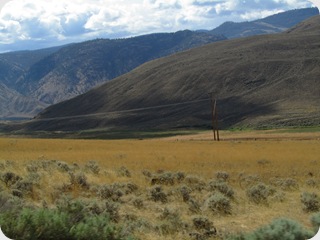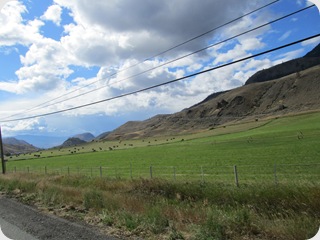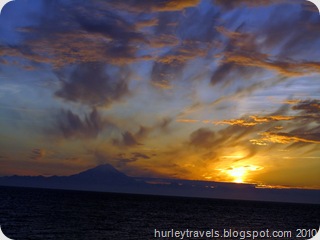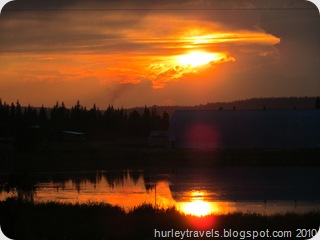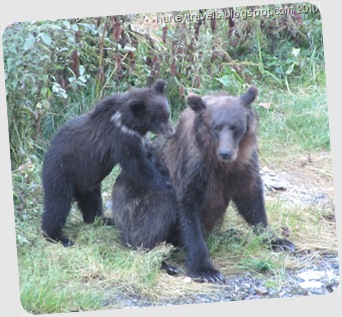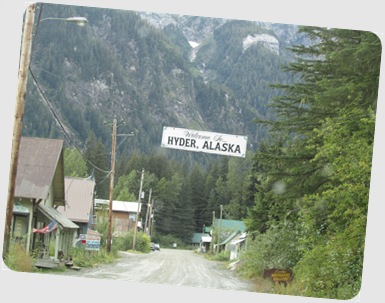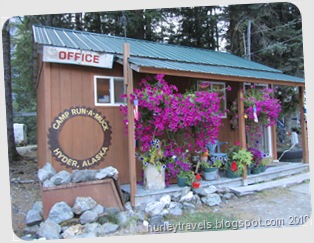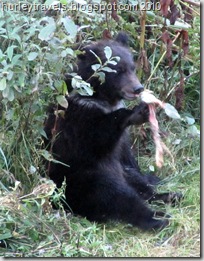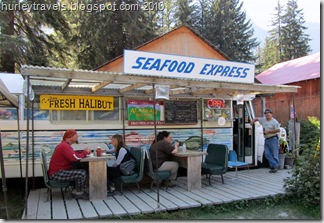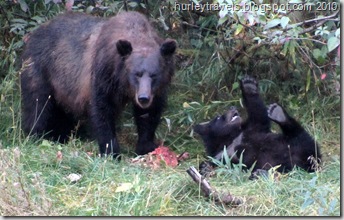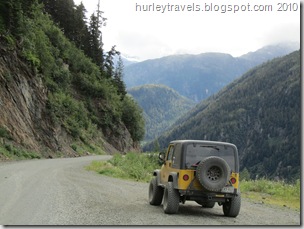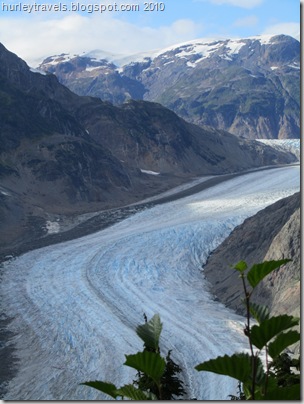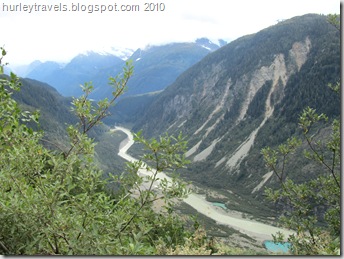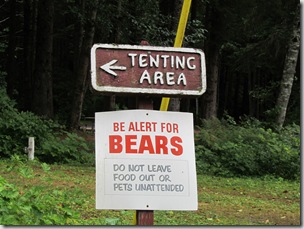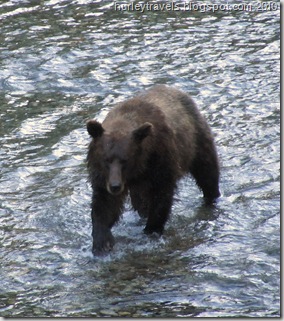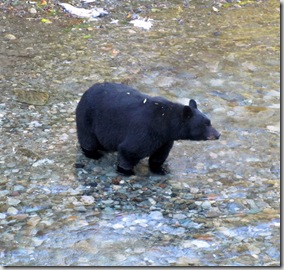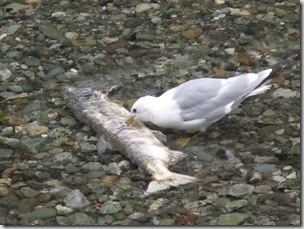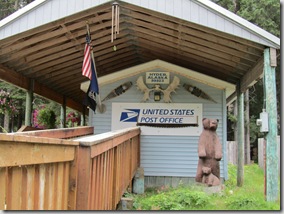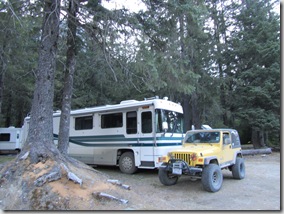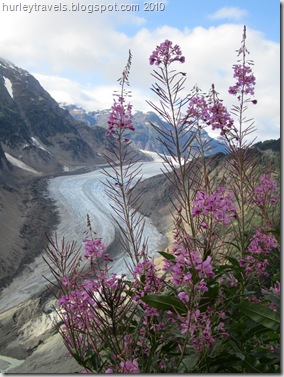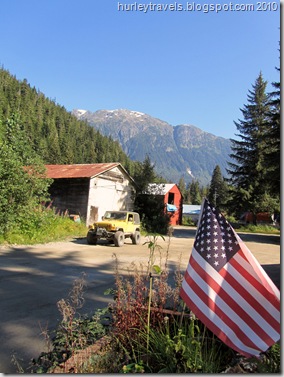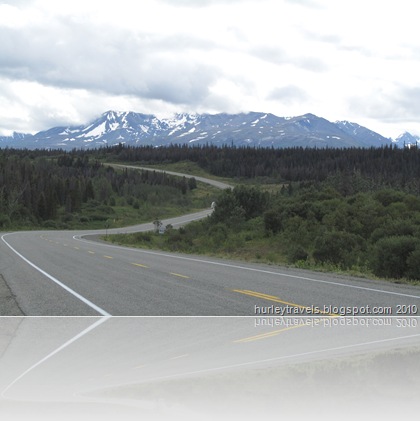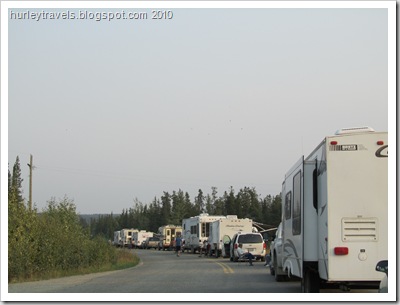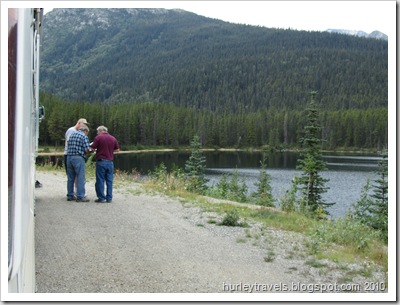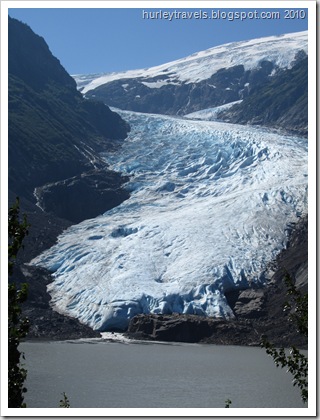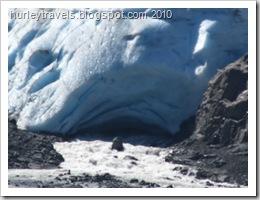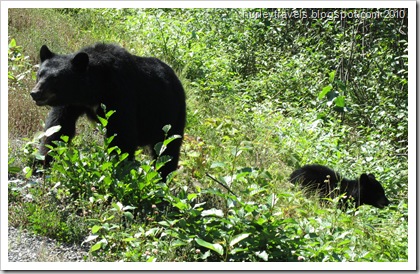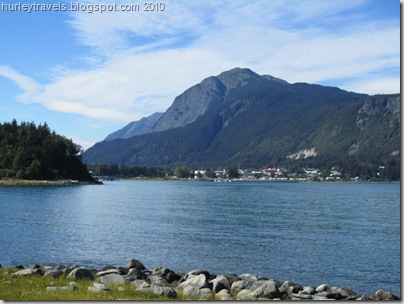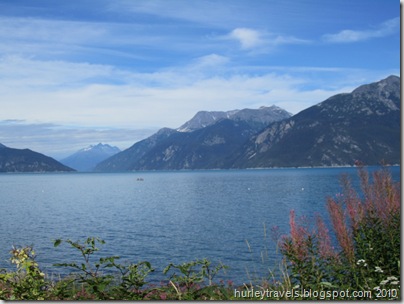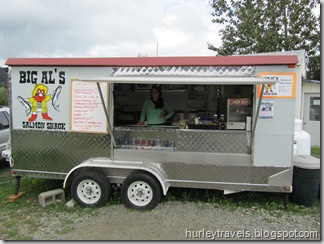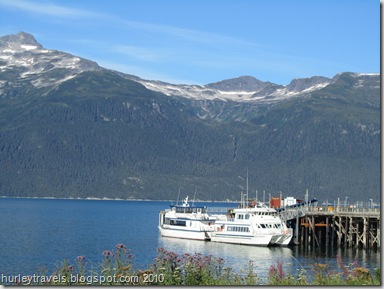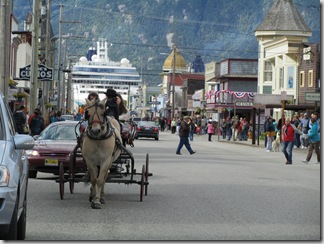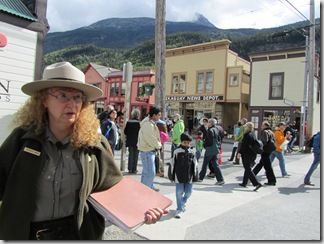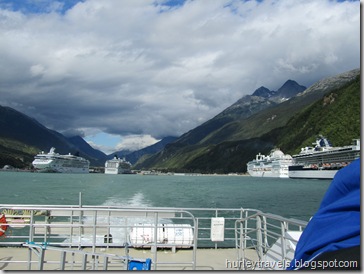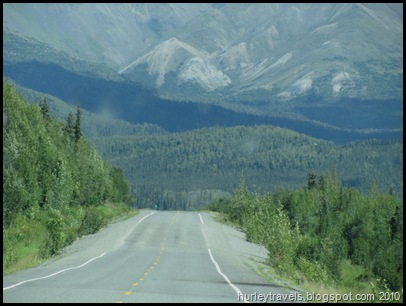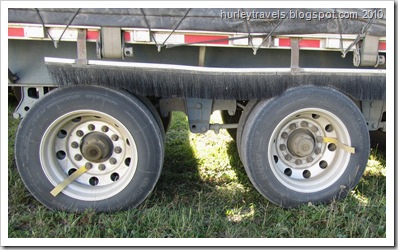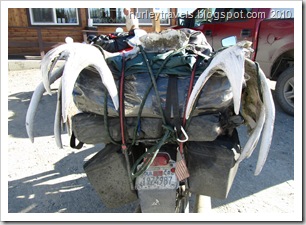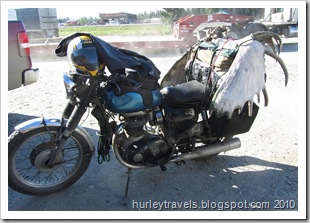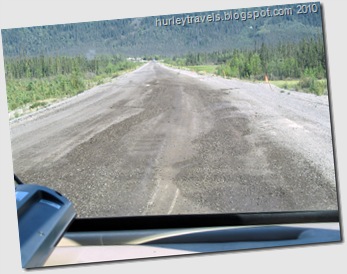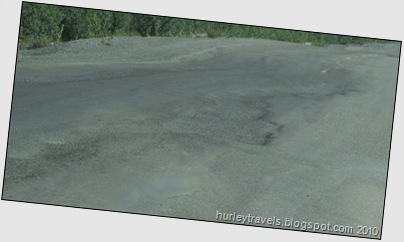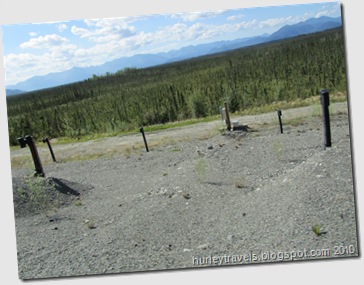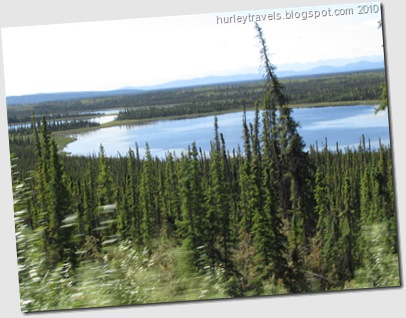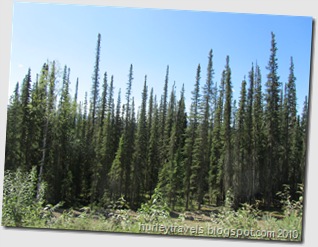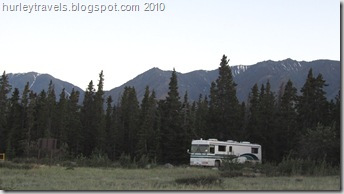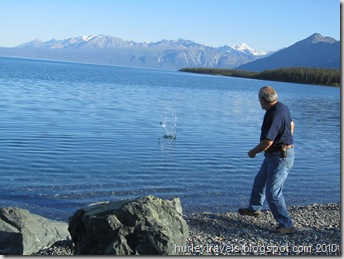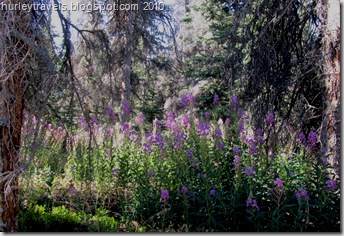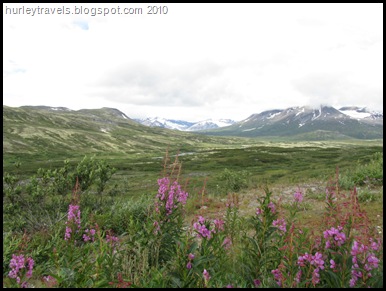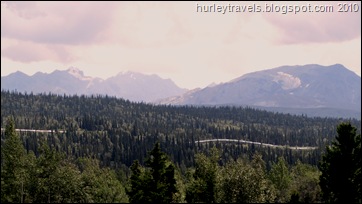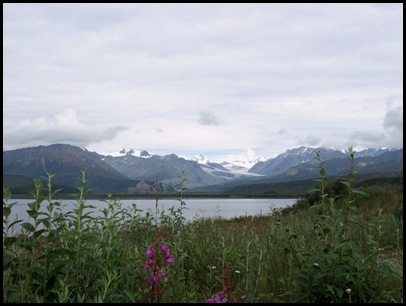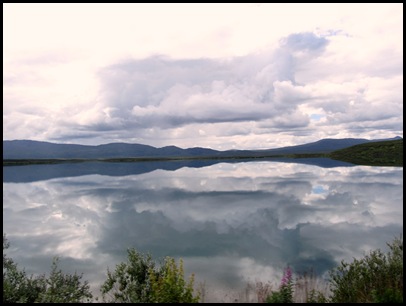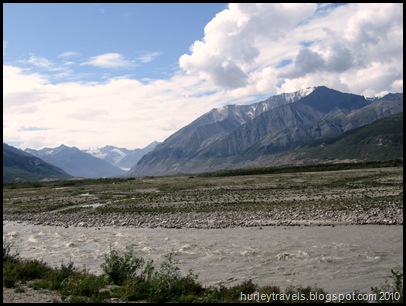Aug 20 - 22: We had mixed feelings when we pulled out of Hyder, Alaska, on the final leg of our Alaska Adventure. The three-month trip has been a feast for the senses, packed with excitement and yet also with a certain kind of peace. We have our own chronicles of the “Land of the Midnight Sun” and of the “last frontier.” It was an outstanding time! But, we both agreed we were ready to wrap up the trip. We have the right combination of things we did and didn’t do. Maybe we’ll come back to complete the exploration some other time. So, we chose a wrapping-it-up route back to the lower 48. Here we go.
For the end of our trip we decided to cross back over into the United States at the Canadian town of Osoyoos, British Columbia, having heard that it is a less congested and, possibly, quicker way to go. So we headed southeast. First, on August 20, we jumped back on the Cassiar Highway (37), south to the Yellowhead Highway (16) and then east to our overnight stop in Fraser Lake. Forestry is a mainstay of the economy in this mountainous area. Signs marking the regenerated sections of the forest are along the byways. We ran across the occasional loaded logging truck and passed several sawmills with pile after pile of lumber and sawdust. 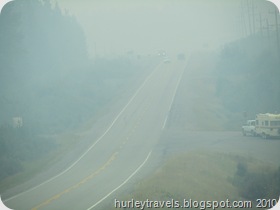 We had this in mind as we rolled along…and began to see a lot of smoke. Many of our views of the mountains and rivers were clouded that afternoon. The wildfires were burning over thousands of acres somewhere in those forests. At about 325 miles down the road we found a nice overnight stop behind the Fraser Lake Visitor Center in a tree-lined empty parking area next to the town’s recreation center. We had a good start on our wrapping-it-up journey, about one-third of the way to the border.
We had this in mind as we rolled along…and began to see a lot of smoke. Many of our views of the mountains and rivers were clouded that afternoon. The wildfires were burning over thousands of acres somewhere in those forests. At about 325 miles down the road we found a nice overnight stop behind the Fraser Lake Visitor Center in a tree-lined empty parking area next to the town’s recreation center. We had a good start on our wrapping-it-up journey, about one-third of the way to the border.
When we went outside to stretch our legs we took a walk around to the other side of the center and came upon the firefighters’ “housing” area, a large tent city. Putting two-and-two together, we weren’t surprised when people started arriving at about 6:30 p.m. for some kind of community gathering in the recreation center. In fact, we laughed at our situation. By 7:00 our rig was completely hemmed-in by vehicles, as far as we could see. Then the officials arrived carrying their large paper rolls (surely diagrams of the fire) and briefcases, ready to inform the citizenry of the fire situation. But, we were okay. We ate our Subway sandwiches, purchased while on our walk, and Jerry talked with a local teacher about the possible dangers. There was no cause for alarm in Fraser Lake or the road we would be traveling in the morning. We enjoyed a quiet night when everyone went home.
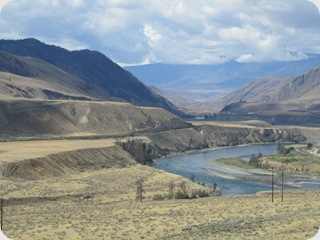 The next morning, heading southeast again, the spruce-lined mountains began changing to plateaus with valleys of sage brush, interspersed with bright green irrigated fields and sprawling ranches.
The next morning, heading southeast again, the spruce-lined mountains began changing to plateaus with valleys of sage brush, interspersed with bright green irrigated fields and sprawling ranches.
A place called 100 Mile House was our next overnight home. This small B. C. town was established as a post house on the Cariboo Wagon Road to the goldfields in the 1860s. What a strange name, right? We found this name, and the 108 Mile Ranch, the town of 70 Mile House, and others similarly tagged, a little humorous, especially since they were on roads marked in kilometers. But then, we supposed that when they were named the mile measurement was in use. It must have been mostly a convenience for the miners who had to frequent the trail.
August 22 - The last day of the wrapping-it-up route, south on Highway 97, wound through resort communities, many steep and windy roadways and into the fertile agricultural valley. The twisty mountain road runs along the Skaha and Okanagan Lakes. It was beautiful sunny day and many Canadians were out enjoying themselves in the Okanagon Falls beach community. 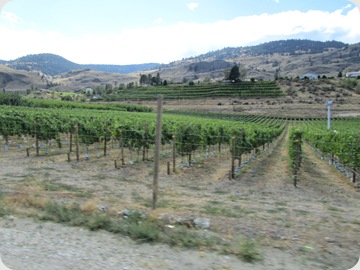 Soon we were in the valley area, lined with orchards and vineyards. Everywhere we looked there were winery signs and fruit stands tempting us to stop. But since we weren’t sure of what foods we were allowed to transport into the U. S., we resisted.
Soon we were in the valley area, lined with orchards and vineyards. Everywhere we looked there were winery signs and fruit stands tempting us to stop. But since we weren’t sure of what foods we were allowed to transport into the U. S., we resisted.
When we reached the Canadian Customs at Osoyoos at 3:25 p.m. we were happy to see only three vehicles ahead of us in the line. Whew! But we did note the border agents asking each driver for their keys and opening the trunk of each vehicle. We were the only rv. So we wondered what was in store for us. Maybe this time we’d have to empty our rig. So, now it was our turn. We showed the courteous border agent our passports and answered the questions about where we lived and how long we had been in Canada and why. He didn’t ask us for keys to the Jeep. Everything seemed great…until…he tells us “Please pull forward to where the agent is standing.” We see ahead of us about 30 feet a uniformed lady waiting. She had more questions, like, “Do you have any pets? Do you have any alcohol? (Yes, one-half a bottle of wine.) Are you transporting anything for anyone else? Then she came inside the motorhome. “Do you have any fruit or vegetables?” Remember, we didn’t stop at those stands. Oh yeah, I remembered that I had two tomatoes, so I said so. She proceeded to look through our refrigerator and open some closet doors. Then she finally asked for the tomatoes. (I had them in a cabinet.) Turns out that they are one of the forbidden vegetables from Canada. This experience coming over the border was a little different than three months earlier crossing into Canada. That time we had thrown out wine and eaten all the vegetables. But, nobody asked. After all is said and done, we only lost two tomatoes! Makes you think though..are there bugs? Yuck! But, as we cruised back onto 97 south toward Oroville, Washington, we noticed the lines crossing into Canada, three of them, stretched several blocks long. Glad we weren’t going that direction. But can you blame them for making a weekend trip over the border to buy groceries and fuel? Those prices are one thing we won’t miss.
Of course, we’ve been thinking and talking about our time up north as we hang out here in Washington enjoying the nice weather. Maybe we’ll put together some of those impressions and conclusions and thoughts…..save them here with the other Alaska Adventure posts. We’ll see.
For now, I’m wrapping-it-up with these two closing shots:
| | British Columbia, Canada -- August 21 |
Thanks for coming along with us on our Alaska Adventure. Take care. Talk to you later.
